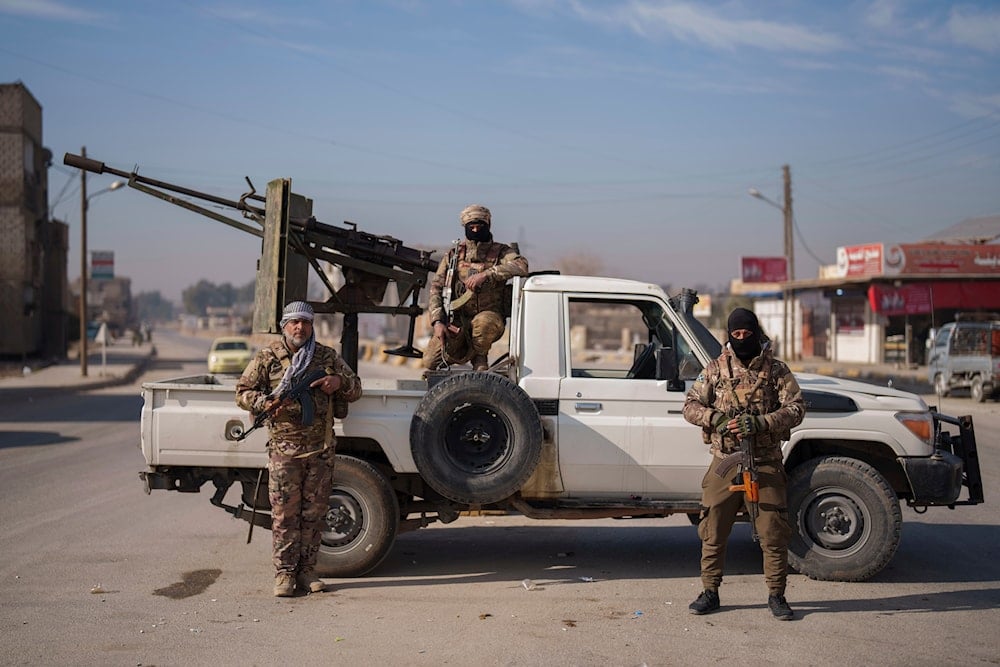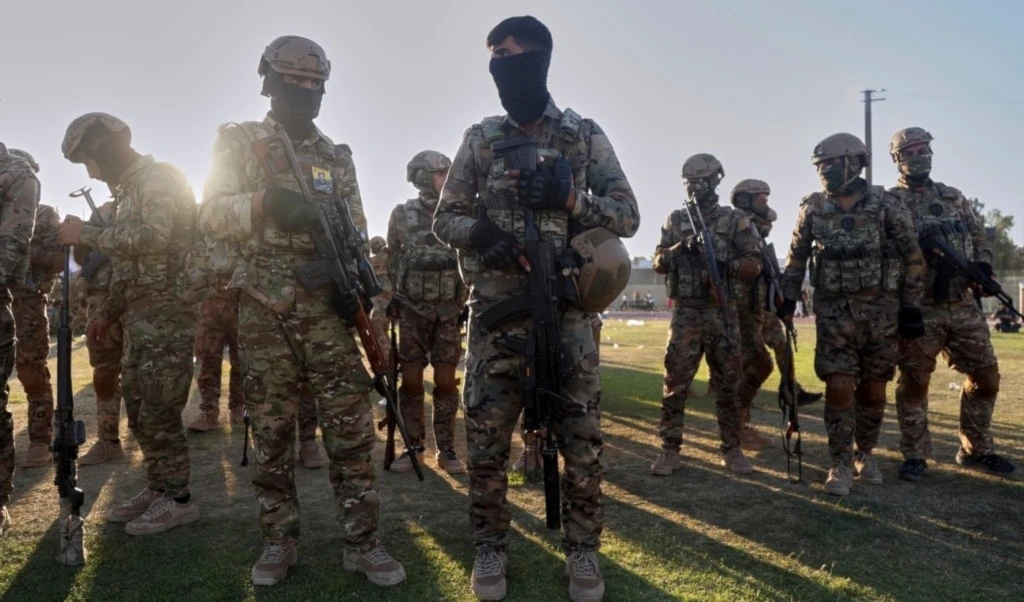It’s time for Syria’s Kurds to fold: FT
The report highlights Syria's fragile transition, with Hay'at Tahrir al-Sham leading an unstable government, regional powers investing while Western sanctions persist, and the SDF seen as an obstacle to unity.
-

Members of the Syrian Democratic Forces pose for a portrait at a checkpoint in the northeastern city of Hassakeh, on January 31, 2025. (AP)
In an analytical piece published by the Financial Times (FT), Charles Lister, director of the Syria and Counterterrorism and Extremism programs at the Middle East Institute, pointed out that Syria’s transition rests on fragile foundations. It is managed at the top by Hay'at Tahrir al-Sham, which still hasn't shown any of the promised progress for the country.
Lister stressed that while regional states are seizing the opportunity to "reshape the heart of the Middle East" while flooding the capital with aid and investments, the US and Europe have kept the sanctions against Syria - leaving little to no hope for the country's economy to recover.
In the report, Lister mentions that the Syrian Democratic Forces (SDF), the US' ally, remains the large elephant in the room. He gave credit to the SDF for confronting ISIS, but stressed that it is now a problem that "needs to go away".
He argued that Syrians across all ethnic, religious, and regional groups agree that unity is essential, adding that the people believe the SDF's autonomous administration and forces should dissolve and integrate into the Syrian state, with its energy and agricultural resources placed under Damascus's control.
Until these steps are taken, the SDF is widely viewed within Syria as an "occupier" and a "threat," with strong domestic animosity toward its US backers.
According to the report, since December 2024, the SDF has been engaged in negotiations with Syria’s interim government over its integration into a "unified Syrian state." However, high-level in-person talks have stalled since a deadly car bombing in Manbij, blamed on the SDF, killed more than 20 people. Despite this, Lister adds, every Syrian he spoke with favored a negotiated settlement over a military confrontation.
Lister revealed that US military officers have been actively facilitating these discussions, even attending high-level meetings at Dumayr Airbase near Damascus. US Central Command also approved the dissolution of the Syrian Free Army—a smaller US-backed force based at al-Tanf—under interim government control. Additionally, a senior US general privately commended interim Syrian President Ahmed al-Sharaa for his military campaign that ousted Assad, even awarding him a medal, according to a Syrian source present in the meeting.
'United fronts'
According to the report, the SDF is weighing a deal that promises Syria’s Kurds equal rights, Kurdish as an official second language, and guaranteed representation in Syria’s transitional bodies, including a temporary parliament and constitutional committee.
Additionally, oil and agricultural revenues would be proportionally allocated to the northeast. While the SDF has largely accepted the framework, the key sticking point remains its demand to retain a distinct military force within Syria’s armed forces, stationed only in the northeast—something Damascus firmly rejects, Lister wrote.
The Syrian government insists all factions must fully integrate to prevent warlordism and promote national unity. With no compromise on this issue, a deal remains elusive. Meanwhile, Turkiye is prepared to launch an offensive should negotiations fail, and Arab tribes are reportedly ready to support such an operation.
On the other hand, the US, which still has strategic interests in Syria, must push for a resolution to stabilize the region and counter ISIS, as the interim government cannot manage the insurgency alone, according to Lister.

 4 Min Read
4 Min Read










